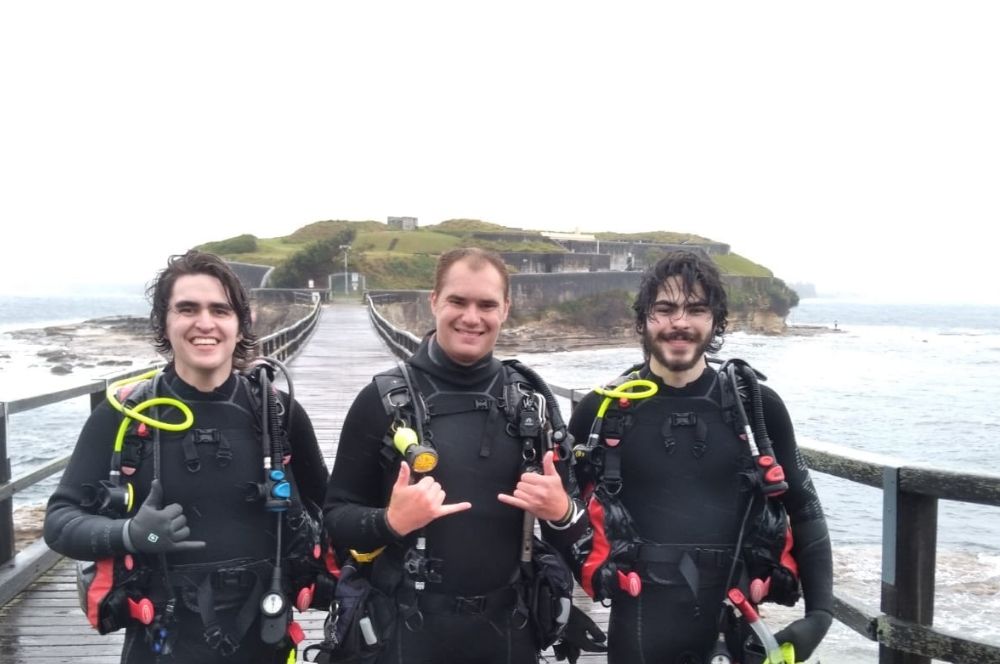You have 0 product(s) in your cart.
Abyss Scuba Diving
Scuba Diving In Rain: Safety Tips & Visibility Insights | Abyss Diving

Can You Scuba Dive in The Rain?
We get asked this question a lot. Your average non-diver might believe that you can’t scuba dive if it’s raining. Mainly because the word implies that the water is “raining” down on you and that could be dangerous. Well, that’s wrong and we’re here to set the record straight.
The truth is that it doesn’t matter what the weather is like outside; you can still go scuba diving; you are going to get wet anyway. As long as the weather is within one of the PADI guidelines (from sunny and calm to windy and rainy), then you can still get wet and dive. However, it is important to check weather forecasts before diving to ensure safety and avoid diving in extremely rough conditions. The majority of avid divers prefer fair weather to bad! That said, there are some things you should consider when diving in the rain.
Heavy rain can affect visibility both underwater and, on the surface, so it is crucial to be cautious and aware of the potential impact on safety.
-
Visibility. In the Sydney area, it would take approximately 2 days with constant rain for it to affect visibility. The truth is that if there isn’t enough rain to cause runoff and instead just a small drizzle, then there’s no need to worry about improper visibility in the sea.
-
Getting Your Clothing Wet The most frustrating aspect of diving in the rain is not getting drenched but keeping your clothing dry. So, when it is raining, it is crucial to plan for how your clothes may stay dry when switching into and out of your wetsuit.
-
Diving Can Be the Best Thing to Do In the rain, you can’t do a lot of things. For example, you can’t mow the lawn, and sunbathing at the beach is not so pleasant. Therefore, going scuba diving is a good option.
Which is better in the rain, Boat Diving or Shore Diving
When it is raining, boat dives generally offer a superior experience compared to shore dives. A significant advantage of boat diving is the ability to keep your clothing dry while changing in and out of your dive gear, as most boats have covered areas. This protection from the rain adds to the comfort and convenience of the diving experience. Additionally, boat dives take you further offshore, where rain runoff typically less affects visibility. The deeper waters and distance from the shore mean that sediment and debris stirred up by the rain have less impact on underwater clarity. Moreover, boats provide access to more diverse and often more interesting dive sites that are not reachable from the shore, with the support and expertise of the boat crew ensuring a safer and more enjoyable dive.
On the other hand, shore diving in the rain can be more problematic. Rain can lead to runoff, especially in coastal areas, significantly reducing visibility near the shore. The entry points for shore dives can also become slippery and hazardous, making the initial descent into the water more challenging. Unlike boat dives, shore dives lacks the covered areas to keep your clothing dry, leading to discomfort when changing in and out of your dive gear. While shore diving is generally more cost-effective and convenient, these benefits can be overshadowed by the practical difficulties and safety concerns posed by wet conditions. Therefore, boat diving is often the better choice for a clearer, more comfortable, and more enjoyable diving experience when it is raining.
Sydney is such a lucky city to have so many diving sites. No matter what the weather conditions, there is always a place to go diving. In the twenty-plus years that Abyss has been in operation, we have only needed to cancel on four occasions due to bad weather.
So, remember that a little bit of rain does not prevent you from diving. In fact, a lot of times during such weather, there is more fish life to be seen.
Recent Posts






